Call for Papers
The Call for Papers for the 2023 edition of the International Conference on Industry 4.0 and Smart Manufacturing (ISM) is now open. Please submit your paper using the Easychair paper management system that you can access through the button here below.
Paper Template
Proceedings and Indexing
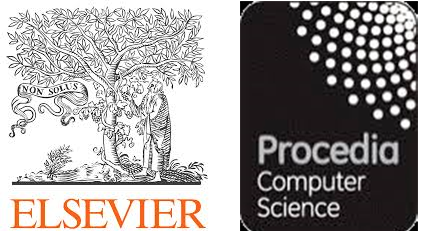
Post-conference Publication Opportunities
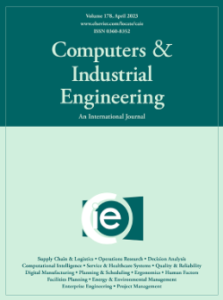
Computers and Industrial Engineering - Elsevier (ISSN 1879-0550)
Computers and Industrial Engineering encourages and will welcome regular submission of the best papers presented at ISM on the topic of human-centric industrial systems. CAIE has CiteScore 9.7 and is indexed by the major databases, including Scopus. Papers will be screened and selected for possible publication on CAIE based on their scientific quality and expected impact. Invitation emails will be sent to the corresponding authors after the selection and the extended papers will then go through the standard peer review process.
Contacts: David Romero Diaz - Tecnológico de Monterrey, Mexico; Antonio Padovano - University of Calabria, Italy
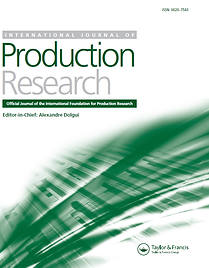
International Journal of Production Research - Taylor & Francis (ISSN 1366-588X)
A selection of papers will be invited on the topic “Sustainable manufacturing using Zero Defect Manufacturing (ZDM): A method for quality assurance and zero waste" and invited to extend their work for possible publication on the IJPR Special Issue. IJPR has a 9.018 Impact Factor and is indexed in the major databases. The selected papers will go through the standard and rigorous peer review process.
Contacts: Foivos Psarommatis - University of Oslo, Norway; Vittorio Solina - University of Calabria, Italy
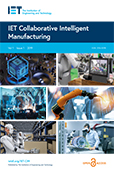
IET Collaborative Intelligent Manufacturing (ISSN 2516-8398)
IET CIM encourages and will welcome regular submission of the best papers presented at ISM. IET CIM is indexed by Scopus, ESCI, Web of Science, EI, ISPEC, and DOJA and is a fully Gold Open Access journal. The ISM 2023 IPC will screen and select the papers that are eligible for possible publication on IET CIM based on their scientific quality and expected impact. Invitation emails will be sent to the corresponding authors after the selection and the extended papers will then go through the standard peer review process. Thanks to the IET’s partnership with ISM, the selected papers will be fully waived for APC.
Contacts: Weiming Shen - Huazhong University of Science and Technology, China
Website: https://digital-library.theiet.org/content/journals/iet-cim
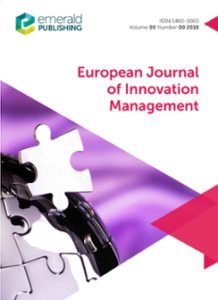
European Journal of Innovation Management - Emerald (ISSN 1460-1060)
EJIM encourages ISM authors to submit papers to the conference that can be later considered for submission in the Section "Innovation Management for Smart Manufacturing". EJIM is indexed by the major databases, including Scopus, Web of Science and has a 8.9 Citescore (2022). The ISM 2023 Scientific Committee will screen and select the ISM papers that are eligible for possible publication on EJIM based on their scientific quality and expected impact. Invitation emails will be sent to the corresponding authors after the selection and the extended papers will then go through the standard peer review process.
Contacts: Vincenzo Corvello - University of Messina, Italy
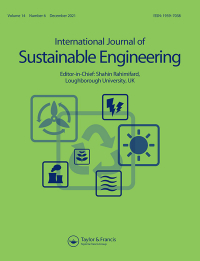
International Journal on Sustainable Engineering – Taylor & Francis (ISSN 1939-7046)
A selection of papers will be invited by the ISM IPC on the topic “Digital solutions for sustainable engineering" and invited to extend their work for possible publication on IJSE. The selected papers will go through the standard peer review process. IJSE is indexed in many scientific databases like Scopus and publishes Open Access.
Contacts: Antonio Padovano - University of Calabria, Italy
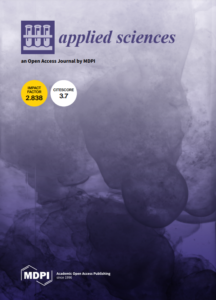
Applied Sciences – MDPI (ISSN 2076-3417)
A selection of papers will be shortlisted by the ISM IPC on the topic “Supply Chains and Logistics 4.0" and invited to extend their work for possible publication on Applied Sciences. Papers will be candidate to receive a full waiver for submission to Applied Sciences. The selected papers will go through the standard peer review process. Applied Sciences is indexed in many scientific databases like Scopus and Web of Science and publishes Open Access.
Contacts: Vittorio Solina - University of Calabria, Italy
Website: https://www.mdpi.com/journal/applsci/special_issues/VY1HVWXJZA
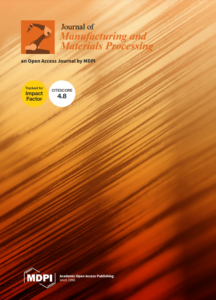
Journal of Manufacturing and Materials Processing – MDPI (ISSN 2504-4494)
A selection of papers will be shortlisted by the ISM IPC on the topic “Smart Manufacturing Technologies" and invited to extend their work for possible publication on JMMP. Papers will be candidate to receive a full waiver for submission to JMMP. The selected papers will go through the standard peer review process. JMMP is indexed in many scientific databases like Scopus and Web of Science and publishes Open Access.
Contacts: Antonio Padovano - University of Calabria, Italy
Website: https://www.mdpi.com/journal/jmmp/special_issues/7M4PXD78HK
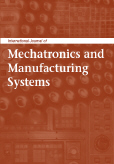
International Journal of Mechatronics and Manufacturing Systems – Inderscience (ISSN 1753-1047)
A selection of papers will be shortlisted by the ISM IPC on the topic “Artificial Intelligence in Robotics and Manufacturing Automation" and invited to extend their work for possible publication on IJMMS. The selected papers will go through the standard peer review process. IJMMS is indexed in many scientific databases like Scopus and also publishes Open Access.
Contacts: Tuğrul Özel - Rutgers University, USA; Antonio Padovano - University of Calabria, Italy
Website: https://www.inderscience.com/jhome.php?jcode=ijmms
Awards

Best Paper Award
The Best Paper Award is assigned by the ISM Best Paper Award International Committee and selected among the top quality papers presented at ISM based on originality, scientific quality and impact on the manufacturing domain.

Industrial Impact Paper Award
The Industrial Impact Paper Award is assigned by the ISM Industrial Partners Committee and selected among the top quality papers presented at ISM that have the greatest impact on industrial practice and provide relevant advances to manufacturing systems.

Best Service Innovation Paper Award
The Best Service Innovation Paper Award is assigned by ISSIP (Int. Society of Service Innovation Professionals) to the best paper dealing with promoting service innovation in industry and in our world by large.

Best Student Paper Award
The Best Student Paper Award is assigned by the ISM Award Committee and selected among the top quality papers presented at ISM and having a student as corresponding author. The student will get a monetary prize and the opportunty to publish a paper on the Journal of Manufacturing and Materials Processing (MDPI).

Innovation Management Best Paper Award
The Innovation Management Best Paper Award is assigned by the ISM Award Committee in collaboration with the Editorial Board of the European Journal of Innovation Management to the best paper dealing with promoting innovation management in industrial contexts.
Guides & Code of Ethics
GUIDE FOR AUTHORS
Before you begin
The Organizer applies the Creative Commons Attribution-Noncommercial-NoDerivative Works 4.0 International License (CC-BY-NC-ND) to the Article where it publishes the Article as part of the proceedings of the conference on its online platforms on an Open Access basis. The CC-BY-NC-ND license allows users to copy and distribute the Article, provided this is not done for commercial purposes and further does not permit distribution of the Article if it is changed or edited in any way, and provided the user gives appropriate credit (with a link to the formal publication through the relevant DOI), provides a link to the license, and that the licensor is not represented as endorsing the use made of the work. The authors will retain the copyright of the Article and related Supplemental Materials and no rights in patents, trademarks or other intellectual property rights are transferred to the Organizer. The authors shall have: (i) the same rights to reuse the Article as those allowed to third party users of the Article under the CC-BY-NC-ND License, as well as (ii) the right to use the Article in a subsequent compilation of the authors’ works or to extend the Article, to include the Article in a thesis or dissertation, or otherwise to use or re-use portions or excerpts in other works. The full details of the license are available at https://creativecommons.org/licenses/by-nc-nd/4.0/.
The Organizer is committed to the permanent availability and preservation of scholarly research and to ensure accessibility by converting and upgrading digital file formats to comply with new technology standards. The Organizer is committed to maintain its own digital archive and a local state-of-the-art facility to store a complete, accurate digital version of the archive. The current format standards are XML and .pdf; with most files being retained in both formats.
Authors of reports of original research should present an accurate account of the work performed as well as an objective discussion of its significance. Underlying data should be represented accurately in the paper. A paper should contain sufficient detail and references to permit others to replicate the work. Fraudulent or knowingly inaccurate statements constitute unethical behavior and are unacceptable.
Data Access and Retention
Authors may be asked to provide the research data supporting their paper for editorial review, should be prepared to provide public access to such data, if practicable, and should be prepared to retain such data for a reasonable number of years after publication.
Originality and Acknowledgement of Sources
The authors should ensure that they have written entirely original works, and if the authors have used the work and/or words of others, that this has been appropriately cited or quoted and permission has been obtained where necessary. Proper acknowledgment of the work of others must always be given. Authors must cite those publications that have been influential in determining the nature of the reported work and that will guide the reader quickly to the earlier work that is essential for understanding the present investigation. Information obtained privately, as in conversation, correspondence, or discussion with third parties, must not be used or reported without explicit, written permission from the source. Plagiarism takes many forms, from ‘passing off’ another’s paper as the author’s own paper, to copying or paraphrasing substantial parts of another’s paper (without attribution), to claiming results from research conducted by others. Plagiarism in all its forms constitutes unethical behavior and is unacceptable. Examples of plagiarism include:
- word-for-word copying of portions of another’s writing without enclosing the copied passage in quotation marks and acknowledging the source in the appropriate scholarly convention;
- the use of a particularly unique term or concept that one has come across in reading without acknowledging the author or source;
- the paraphrasing or abbreviated restatement of someone else’s ideas without acknowledging that another person’s text has been the basis for the paraphrasing;
- material that has not been attributed to the source from which it has not been obtained;
- the submission of the same or a very similar paper to two or more publications at the same time (self-plagiarism).
Submission of an article implies that the work has not been published previously (except in the form of an abstract, a published lecture or academic thesis), that it is not under consideration for publication elsewhere, and that, if accepted, it will not be published elsewhere in the same form, in English or in any other language, including electronically, without the written consent of the copyright-holder. Submitting the same or similar manuscript to more than one conference or journal concurrently constitutes unethical behavior and is unacceptable. An author should inform the Editors/IPC members of related manuscripts that the author has under editorial consideration or in press. Copies of those manuscripts should be supplied and the relationships of such manuscripts to the one submitted should be indicated. It is improper for an author to submit manuscripts describing essentially the same research to more than one conference/journal, unless it is a resubmission of a manuscript rejected for or withdrawn from publication. It is generally permissible to submit a manuscript for a full paper expanding on a previously published brief preliminary account of the same work. However, the preliminary communication should be cited in the manuscript.
Authorship of the Paper
Authorship should be limited to those who have made a significant contribution to the conception, design, execution, or interpretation of the reported study. All those who have made substantial contributions should be listed as co-authors. Where there are others who have participated in certain substantive aspects of the paper (e.g. language editing or medical writing), they should be recognized in the acknowledgements section. The corresponding author should ensure that all appropriate co-authors and no inappropriate co-authors are included on the paper, and that all co-authors have seen and approved the final version of the paper and have agreed to its submission for publication. Authors are expected to consider carefully the list and order of authors before submitting their manuscript and provide the definitive list of authors at the time of the original submission. Only in exceptional circumstances the Editors will consider (at their discretion) the addition, deletion or rearrangement of authors after the manuscript has been submitted. To request such a change, the Editors must receive the following from the corresponding author: (a) the reason for the change in author list and (b) written confirmation (e-mail, letter) from all authors that they agree with the addition, removal or rearrangement. The paper’s metadata must be changed accordingly in the submission system. All authors must agree with any such addition, removal or rearrangement. Authors take collective responsibility for the work. Each individual author is accountable for ensuring that questions related to the accuracy or integrity of any part of the work are appropriately investigated and resolved.
Hazards for Human or Animal Subjects
If the work involves chemicals, procedures or equipment that have any unusual hazards inherent in their use, the author must clearly identify these in the manuscript. If the work involves the use of animal or human subjects, the author should ensure that the manuscript contains a statement that all procedures were performed in compliance with relevant laws and institutional guidelines and that the appropriate institutional committee(s) have approved them. Authors should include a statement in the manuscript that informed consent was obtained for experimentation with human subjects. The privacy rights of human subjects must always be observed. For human subjects, the author should ensure that the work described has been carried out in accordance with The Code of Ethics of the World Medical Association (Declaration of Helsinki) for experiments involving humans. All animal experiments should comply with the ARRIVE guidelines and should be carried out in accordance with the U.K. Animals (Scientific Procedures) Act 1986 and associated guidelines, or EU Directive 2010/63/EU on the protection of animals used for scientific purposes, or the U.S. Public Health Service Policy on Humane Care and Use of Laboratory Animals and, as applicable, the Animal Welfare Act. Appropriate consents, permissions and releases must be obtained where authors wish to include case details or other personal information or images of patients and any other individuals in the article in order to comply with all applicable laws and regulations concerning the privacy and/or security of personal information, including, but not limited to, the Health Insurance Portability and Accountability Act of 1996 (“HIPAA”) and other U.S. federal and state laws relating to privacy and security of personally identifiable information, the General Data Protection Regulation (GDPR) (EU) 2016/679 and member state implementing legislation, Canada’s Personal Information Protection and Electronic Documents Act, India’s Information Technology Act and related Privacy Rules, (together “Data Protection and Privacy Laws”). It is the responsibility of the author to ensure that each individual, or the individual’s legal guardian or other person with legal authority to act on the individual’s behalf who appears in any video, recording, photograph, image, illustration or case report (or in any other identifiable form) is made aware in advance of the fact that such photographs are being taken or such video, recording, photograph, image, illustration or report is being made, and of all the purposes for which they might be used, including disclosure to the Organizer and use by the Organizer or its licensees in any work or product. That individual, legal guardian or person with legal authority must give his/her explicit written consent. If such consent is made subject to any conditions (for example, adopting measures to prevent personal identification of the person concerned), the Organizer must be made aware in writing of all such conditions. Written consents must be retained by the author and copies of the consents or evidence that such consents have been obtained must be provided to the Organizer on request. The form of written consent must comply with each requirement of all applicable Data Protection and Privacy Laws. Particular care should be taken with obtaining consent where children are concerned (in particular where a child has special needs or learning disabilities), where an individual’s head or face appears, or where reference is made to an individual’s name or other personal details. In the case of a child, if parents or guardians disagree on the use of the images of that child, then consent should be deemed not to have been given and those images should not be used. It is also important to ensure that only images of children in suitable dress are used to reduce the risk of images being used inappropriately. Even if consent has been obtained, care must be taken to ensure that the portrayal and captioning of the individual concerned are respectful and could not be seen as denigrating that individual. Patients’ and research subjects’ personal or identifying information should not be used. Images of patients or research subjects should not be used unless the information is essential for scientific purposes and explicit permission has been given as part of the consent. Even where consent has been given, identifying details should be omitted if they are not essential. If identifying characteristics are altered to protect anonymity, authors should provide assurances that such alterations do not distort scientific meaning. Formal consents are not required for the use of entirely anonymized images from which the individual cannot be identified- for example, x-rays, ultrasound images, pathology slides or laparoscopic images, provided that these do not contain any identifying marks and are not accompanied by text that might identify the individual concerned. If consent has not been obtained, it is generally not sufficient to anonymize a photograph simply by using eye bars or blurring the face of the individual concerned.
Declaration of Competing Interests
Conflict of Interest is defined as “a divergence between an individual’s private interests (competing interests) and his or her responsibilities to scientific and publishing activities, such that a reasonable observer might wonder if the individual’s behavior or judgment was motivated by considerations of his or her competing interests”. All authors should disclose in their manuscript any financial and personal relationships with other people or organizations that could be viewed as inappropriately influencing (bias) their work. All sources of financial support for the conduct of the research and/or preparation of the article should be disclosed, as should the role of the sponsor(s), if any, in study design; in the collection, analysis and interpretation of data; in the writing of the report; and in the decision to submit the article for publication. If the funding source(s) had no such involvement then this should be stated. Examples of potential conflicts of interest which should be disclosed include employment, consultancies, stock ownership, honoraria, paid expert testimony, patent applications/registrations, and grants or other funding. Potential conflicts of interest should be disclosed at the earliest possible stage.
Notification of Fundamental Errors
When an author discovers a significant error or inaccuracy in their own published work, it is the author’s obligation to promptly notify the Editors or Organizer and cooperate to retract or correct the paper if deemed necessary by the Editors. If the Editors or the Organizer learn from a third party that a published work contains an error, it is the obligation of the author to cooperate with the Editors, including providing evidence where requested.
Image Integrity
It is not acceptable to enhance, obscure, move, remove, or introduce a specific feature within an image. Adjustments of brightness, contrast, or color balance are acceptable if and as long as they do not obscure or eliminate any information present in the original. Manipulating images for improved clarity is accepted, but manipulation for other purposes could be seen as scientific ethical abuse and will be dealt with accordingly. Authors should comply with any specific policy for graphical images applied by the relevant journal, e.g. providing the original images as supplementary material with the article, or depositing these in a suitable repository
Inclusiveness
Inclusive language acknowledges diversity, conveys respect to all people, is sensitive to differences, and promotes equal opportunities. Articles should make no assumptions about the beliefs or commitments of any reader, should contain nothing which might imply that one individual is superior to another on the grounds of race, sex, culture or any other characteristic, and should use inclusive language throughout. Authors should ensure that writing is free from bias, for instance by using ‘he or she’, ‘his/her’ instead of ‘he’ or ‘his’, and by making use of job titles that are free of stereotyping (e.g. ‘chairperson’ instead of ‘chairman’ and ‘flight attendant’ instead of ‘stewardess’).
Publication Decisions
The Editors of the Conference Proceedings are solely and independently responsible for deciding which of the articles submitted to the conference should be published. The validation of the work in question and its importance to researchers and readers must always underwrite such decisions. The Editors may be guided by the policies of the Conference and constrained by such legal requirements as shall then be in force regarding issues such as libel, copyright infringement and plagiarism. The Editors may confer with the International Program Committee (IPC) members of the conference and reviewers in making these decisions. All of them are responsible for the contents and overall quality of publication, while the it is the Editors’ the final decision regarding acceptance or rejection of articles.
Peer Review
The Editors of the Conference Proceedings operate a double-blind review process. All contributions will be initially assessed by the editor for suitability for the conference. Papers deemed suitable are then typically sent to a minimum of two external and independent expert reviewers, and where necessary the Editors should seek additional opinions. The Editors shall select reviewers who have suitable expertise in the relevant field and shall follow best practice in avoiding the selection of fraudulent peer reviewers. The Editors shall review all disclosures of potential conflicts of interest and suggestions for self-citation made by reviewers in order to determine whether there is any potential for bias. The factors that are taken into account by reviewers are relevance, significance, soundness, originality, referencing and language. If authors are encouraged to revise and resubmit a submission, there is no guarantee that the revised submission will be accepted by the Editors.
Fair Play
The Editors should evaluate manuscripts for their intellectual content without regard to race, gender, sexual orientation, religious belief, ethnic origin, citizenship, or political philosophy of the authors. The editorial policies of the conference should encourage transparency and complete, honest reporting, and the Editors should ensure that peer reviewers and authors have a clear understanding of what is expected of them. The Editors shall establish, along with the Organizer, a transparent mechanism for appeal against editorial decisions. In particular, the Editors shall not require that references to the conference’s articles be included except for genuine scholarly reasons and authors should not be required to include references to the Editors’ own articles or products and services in which the Editors have an interest.
Confidentiality
The Editors must protect the confidentiality of all material submitted to the conference and all communications with reviewers, whose identities must be protected. In exceptional circumstances and in consultation with the Organizer, the editor may share limited information where deemed necessary to investigate suspected research misconduct. Unpublished materials disclosed in a submitted manuscript must not be used in an Editor’s own research without the express written consent of the author. Privileged information or ideas obtained through peer review must be kept confidential and not used for personal advantage.
Declaration of Competing Interests
Any potential editorial conflicts of interest should be declared to the Organizer in writing prior to the appointment of the Editors, and then updated if and when new conflicts arise. The Editors must not be involved in decisions about papers which they have written themselves or have been written by family members or colleagues or which relate to products or services in which the Editors have an interest. Further, any such submission must be subject to all of the conference’s usual procedures, peer review must be handled independently of the relevant author/editor and their research groups.
Vigilance over the Published Record
The Editors should work to safeguard the integrity of the published record by reviewing and assessing reported or suspected misconduct (research, publication, reviewer and editorial), in conjunction with the Organizer. Such measures will generally include contacting the author of the manuscript or paper and giving due consideration to the respective complaint or claims made, but may also include further communications to the relevant institutions and research bodies. The Editors shall further make appropriate use of the Organizer’s systems for the detection of misconduct, such as plagiarism. An editor presented with convincing evidence of misconduct should coordinate with the Organizer to arrange the prompt publication of a correction, retraction, expression of concern, or other correction to the record, as may be relevant.
Guardianship of the scholarly record
It is an important role of the Organizer to maintain the integrity of the scholarly record. Although ethical codes inevitably concentrate on the infractions that sometimes occur, it is crucial that the system works well and that problems are comparatively rare. The Organizer has a supporting, investing and nurturing role in the scholarly communication process and it is also ultimately responsible for ensuring that best practice is followed in its publications, ethical matters, errors and retractions.
Editorial Independence
The Organizer strongly believes in ensuring that the editorial decision-making processes are completely separate from revenue interests. Safeguarding this editorial independence requires that all editorial decisions, or concerns or complaints about editorial decisions, are dealt with strictly within the editorial structures of the conference. It further requires that no one on the commercial or executive side of the business can get involved in, interfere with, or even comment on editorial decisions under any circumstances. To deviate from the rigorous application of this principle in any individual situation would ultimately serve to undermine the integrity of the principle of editorial independence altogether.
Confidentiality
The Organizer recognizes that personal data and information can be leveraged to deliver tremendous value. The Organizer must protect the confidentiality of all personal (first and family names), contact (telephone numbers, fax, mailing address, residence address, and billing address) and other information (affiliation, data regarding submission and photos) and ensure the proper handling and storage of data and information in accordance to all applicable laws and regulations concerning the privacy and/or security of personal information, including, but not limited to, the Health Insurance Portability and Accountability Act of 1996 (“HIPAA”) and other U.S. federal and state laws relating to privacy and security of personally identifiable information, the General Data Protection Regulation (GDPR) (EU) 2016/679 and member state implementing legislation, Canada’s Personal Information Protection and Electronic Documents Act, India’s Information Technology Act and related Privacy Rules, (together “Data Protection and Privacy Laws”). The Organizer collect and process data for multiple purposes, such as (i) the upload of the program committee on the submission system; (ii) sending all the information related to the submission of the paper and registration to the conference; (iii) the management and organization of the event; (iv) processing and solving questions and request; (v) the inclusion of the paper in the conference proceedings; (vi) sending informative material, follow up, news, and invitation to the events organized by the Organizer. Data will be shared with the MSC-LES Laboratory of the Department of Mechanical, Energy and Management Engineering of the University of Calabria, the Organizer’s research partner. In order to provide opportunities to the conference authors to extend their work on special issues of international journals, data may be shared with editors of such journals. In order to manage the conference participants’ registration fees, data will be shared with a selected third-party by using special scripts. Photographs taken during conference will be shared on conference website and social networks, unless otherwise requested by the participants. Data will be kept for as long as the Organizer needs it for the purpose it is being processed, or until the authors ask the Organizer the opposite, or up to a maximum of 10 years.
Education on Ethics in Publication
The Organizer shall provide extensive education and advice on publishing ethics standards, particularly for the Editors, reviewers, authors and early career researchers.
When the manuscript is accepted for publication as part of the conference proceedings, the author should grant to the Organizer an exclusive publishing and distribution license of the manuscript and any tables, illustrations or other material submitted for publication as part of the manuscript in all forms and media (whether now known or later developed), throughout the world, in all languages, for the full term of the copyright, effective when the manuscript is accepted for publication. This license includes the right to enforce the rights granted by this license against third parties and to sublicense such rights.
In order to ensure articles wide dissemination, the Organizer shall publish the conference proceedings on an Open access basis. The publication of the articles is completely funded by the payments of the full registration fee that are made by authors, their institution or funding bodies to participate to the conference.
With respect to Supplemental Materials that the authors wish to make accessible through a link in the manuscript, the Organizer shall be entitled to publish, post, reformat, index, archive, make available and link to such Supplemental Materials on a non-exclusive basis in all forms and media (whether now known or later developed), and permit others to do so. “Supplemental Materials” shall mean additional materials that are not an intrinsic part of the manuscript, including but not limited to experimental data, e-components, encodings and software, and enhanced graphical, illustrative, video and audio material. The authors shall ensure that any software contained in the Supplemental Materials is free from viruses, contaminants or worms. If the manuscript or any of the Supplemental Materials were prepared jointly with other authors, the authors have informed the co-author(s) of the conference policies at the moment of the submission.
Articles that have been published shall remain extant, exact and unaltered as far as is possible. However, very occasionally circumstances may arise where an article is published that must later be retracted or even removed. In all cases, the Organizer will retain all article versions, including retracted or otherwise removed articles. Articles that have been accepted for publication but which have not been formally published and that include errors, or are discovered to be accidental duplicates of other published article(s), or are determined to violate the publishing ethics guidelines in the view of the Editors (such as multiple submission, bogus claims of authorship, plagiarism, fraudulent use of data or the like), may be “Withdrawn”. Withdrawn means that the article will not appear as part of the conference proceedings and therefore will not be published. Occasionally a retraction will be used to correct errors in submission or publication. The retraction of an article by its authors or the Editors under the advice of members of the scholarly community is possible. In this case, the online article is preceded by a screen containing the retraction note, titled “Retraction: [article title]” signed by the authors and/or the Editors. The reader can then proceed to the article itself. The original article is retained unchanged save for a watermark on the .pdf indicating on each page that it is “retracted. The HTML version of the document is removed. In an extremely limited number of cases, it may be necessary to remove an article from the online database. This will only occur where the article is clearly defamatory, or infringes others’ legal rights, or where the article is, or we have good reason to expect it will be, the subject of a court order, or where the article, if acted upon, might pose a serious health risk. In these circumstances, while the metadata (Title and Authors) will be retained, the text will be replaced with a screen indicating the article has been removed for legal reasons. In cases where the article, if acted upon, might pose a serious health risk, the authors of the original article may wish to retract the flawed original and replace it with a corrected version. In these circumstances the procedures for retraction will be followed with the difference that a link to the corrected re-published article and a history of the document will be published.
Manuscript preparation
The papers should have a minimum length of 3 pages and a maximum length of 10 pages, so even short articles are accepted. Please understand that additional pages per paper above the 10 page limit will be charged by an over-length page fee. Visit the Registration and Fees section for further information.
Author names and affiliations: Please clearly indicate the given name(s) and family name(s) of each author and check that all names are accurately spelled. Present the authors’ affiliation addresses (where the actual work was done) below the names. Indicate all affiliations with a lower-case superscript letter immediately after the author’s name and in front of the appropriate address. Provide the full postal address of each affiliation, including the country name and, if available, the e-mail address of each author. If an author has moved since the work described in the article was done, or was visiting at the time, a ‘Present address’ (or ‘Permanent address’) may be indicated as a footnote to that author’s name. The address at which the author actually did the work must be retained as the main, affiliation address.
Corresponding author: Clearly indicate with an asterisk who will handle correspondence at all stages of refereeing and publication, also post-publication. This responsibility includes answering any future queries about Methodology and Materials. Ensure that the e-mail address is given and that contact details are kept up to date by the corresponding author.
Abstract: A concise and factual abstract is required and must be limited to 150 words. The abstract should state briefly the purpose of the research, the principal results and major conclusions. An abstract is often presented separately from the article, so it must be able to stand alone. For this reason, references and mathematical symbols should be avoided. Also, non-standard or uncommon abbreviations should be avoided, but if essential they must be defined at their first mention in the abstract itself.
Keywords: Put Keywords after the abstract, then follow with your Body Text. Leave one blank line before and after the keywords. A list of no more than 4 keywords or keywords phrases will identify your paper in indices and databases. Use text of 10 points in size and Times New Roman Font Type. Be sparing with abbreviations: only abbreviations firmly established in the field may be eligible. These keywords will be used for indexing purposes.
Abbreviations: Define abbreviations that are not standard in this field in the text or in a section in the first page of the article. Such abbreviations that are unavoidable in the abstract must be defined at their first mention there, as well as in this section. Ensure consistency of abbreviations throughout the article.
Subdivision – numbered sections: Divide your article into clearly defined and numbered sections. Subsections should be numbered 1.1 (then 1.1.1, 1.1.2, …), 1.2, etc. (the abstract is not included in section numbering). Use this numbering also for internal cross-referencing: do not just refer to ‘the text’. Any subsection may be given a brief heading. Each heading should appear on its own separate line.
Introduction: State the objectives of the work and provide an adequate background, avoiding a detailed literature survey or a summary of the results. Focus on the original and outstanding contribution of your work compared to the state of the art.
Material and methods: Provide sufficient details to allow the work to be reproduced by an independent researcher. Methods that are already published should be summarized, and indicated by a reference. If quoting directly from a previously published method, use quotation marks and also cite the source. Any modifications to existing methods should also be described.
Results: Results should be clear and concise.
Discussion: This should explore the significance of the results of the work, not repeat them. A combined Results and Discussion section is often appropriate. Avoid extensive citations and discussion of published literature.
Conclusions: The main conclusions of the study may be presented in a short Conclusions section, which may stand alone or form a subsection of a Discussion or Results and Discussion section.
Appendices: If there is more than one appendix, they should be identified as A, B, etc. Formulae and equations in appendices should be given separate numbering: Eq. (A.1), Eq. (A.2), etc.; in a subsequent appendix, Eq. (B.1) and so on. Similarly for tables and figures: Table A.1; Fig. A.1, etc.
Acknowledgements: Collate acknowledgements in a separate section at the end of the article before the references and do not, therefore, include them on the title page, as a footnote to the title or otherwise. List here those individuals who provided help during the research (e.g., providing language help, writing assistance or proof reading the article, etc.).
Formatting of funding sources: List funding sources in this standard way to facilitate compliance to funder’s requirements: “Funding: This work was supported by the National Institutes of Health [grant numbers xxxx, yyyy]; the Bill&Melinda Gates Foundation, Seattle, WA [grant number zzzz]; and the United States Institutes of Peace [grant number aaaa].” It is not necessary to include detailed descriptions on the program or type of grants and awards. When funding is from a block grant or other resources available to a university, college, or other research institution, submit the name of the institute or organization that provided the funding. If no funding has been provided for the research, please include the following sentence: “This research did not receive any specific grant from funding agencies in the public, commercial, or not-for-profit sectors.”
Math formulae: Please submit math equations as editable text and not as images. Present simple formulae in line with normal text where possible and use the solidus (/) instead of a horizontal line for small fractional terms, e.g., X/Y. In principle, variables are to be presented in italics. Powers of e are often more conveniently denoted by exp. Number consecutively any equations that have to be displayed separately from the text (if referred to explicitly in the text).
Footnotes: Do not use footnotes; instead incorporate such material into the text directly or parenthetically.
Citation in text: Please ensure that every reference cited in the text is also present in the reference list (and vice versa). Citations in the text should follow the referencing style used in the conference template. Unpublished results and personal communications are not recommended in the reference list, but may be mentioned in the text. If these references are included in the reference list they should follow the standard reference style of the journal and should include a substitution of the publication date with either ‘Unpublished results’ or ‘Personal communication’. Citation of a reference as ‘in press’ implies that the item has been accepted for publication.
Web references: As a minimum, the full URL should be given and the date when the reference was last accessed. Any further information, if known (DOI, author names, dates, reference to a source publication, etc.), should also be given. Web references can be listed separately (e.g., after the reference list) under a different heading if desired, or can be included in the reference list.
Data references: You are encouraged to cite underlying or relevant datasets in your manuscript by citing them in your text and including a data reference in your Reference List. Data references should include the following elements: author name(s), dataset title, data repository, version (where available), year, and global persistent identifier. Add [dataset] immediately before the reference so we can properly identify it as a data reference. The [dataset] identifier will not appear in your published article.
References in a special issue: Please ensure that the words ‘this issue’ are added to any references in the list (and any citations in the text) to other articles in the same Special Issue.
List of references: References should follow the referencing style used in the conference template.
Full draft papers or short papers should be prepared according to the conference template and submitted electronically exclusively to the paper submission management website.
After the notification of acceptance, authors are required to prepare and submit the camera ready paper. The camera ready paper must adhere to the template. Please provide the final manuscript in an editable format (MS Word or Latex) and the PDF version. If your work must be cleared or approved before publication by your institution, company, or governmental agency, please be sure that process will be completed by the due date above or we will not be able to include it in the Conference Proceedings. The final manuscript should be submitted using the paper submission management system.
After acceptance
Authors are expected to consider carefully the list and order of authors before submitting their manuscript and provide the definitive list of authors at the time of the original submission. Any addition, deletion or rearrangement of author names in the authorship list should be made only before the manuscript has been accepted. The paper’s metadata must be changed accordingly in the submission system. To request such a change, please send an email to the Editors must receive the following from the corresponding author: (a) the reason for the change in author list and (b) written confirmation (e-mail, letter) from all authors that they agree with the addition, removal or rearrangement. In the case of addition or removal of authors, this includes confirmation from the author being added or removed. Only in exceptional circumstances will the Editors consider the addition, deletion or rearrangement of authors after the manuscript has been accepted.
GUIDE FOR SCIENTIFIC COMMITTEE MEMBERS AND REVIEWERS
Before you begin
- will receive a personalized reviewer certificate if your review will be considered useful for the final decision on the paper.
- will be included in the conference acknowledgements in the final agenda/program.
- will be considered for the ISM outstanding reviewer award.
- Accepted in Present Form: The paper is accepted without any further changes.
- Accepted with Minor Revisions: The paper is in principle accepted after revision based on the reviewer’s comments.
- Accept after Major Revisions: The acceptance of the manuscript would depend on the revisions. The author needs to provide a point by point response or provide a rebuttal if some of the reviewer’s comments cannot be revised. Usually, only one round of major revisions is allowed.
- Rejected: The article has serious flaws, makes no original contribution, and the paper is rejected.
- A brief summary (one short paragraph) outlining the aim of the paper and its main contributions.
- Broad comments highlighting areas of strength and weakness. These comments should be specific enough for authors to be able to respond.
- Specific comments referring to line numbers, tables or figures. Reviewers need not comment on formatting issues that do not obscure the meaning of the paper, as these will be addressed by editors.
- Originality/Novelty: Is the question original and well defined? Do the results provide an advance in current knowledge?
- Significance: Are the results interpreted appropriately? Are they significant? Are all conclusions justified and supported by the results? Are hypotheses and speculations carefully identified as such?
- Quality of Presentation: Is the article written in an appropriate way? Are the data and analyses presented appropriately? Are the highest standards for presentation of the results used?
- Scientific Soundness: is the study correctly designed and technically sound? Are the analyses performed with the highest technical standards? Are the data robust enough to draw the conclusions? Are the methods, tools, software, and reagents described with sufficient details to allow another researcher to reproduce the results?
- Interest to the Readers: Are the conclusions interesting for the conference audience? Will the paper attract a wide readership, or be of interest only to a limited number of people? (please see the Topics of the conference)
- Overall Merit: Is there an overall benefit to publishing this work? Does the work provide an advance towards the current knowledge? Do the authors have addressed an important long-standing question with smart experiments?
- English Level: Is the English language appropriate and understandable?
- to look at the reference list of the manuscript and check if references are appropriate, previous work has been properly cited or if there are inappropriate self-citations;
- to check whether the work has been already published before, even in part. Reviewers should express their views clearly with supporting arguments and identify relevant published work that has not been cited by the authors.
- to provide a detailed, constructive review report and to treat authors and their work as they would like to be treated themselves and to observe good reviewing etiquette.
A reviewer should be alert to potential ethical issues in the paper and should bring these to the attention of the Editors, including any substantial similarity or overlap between the manuscript under consideration and any other published paper of which the reviewer has personal knowledge. Any statement that an observation, derivation, or argument had been previously reported should be accompanied by the relevant citation.
